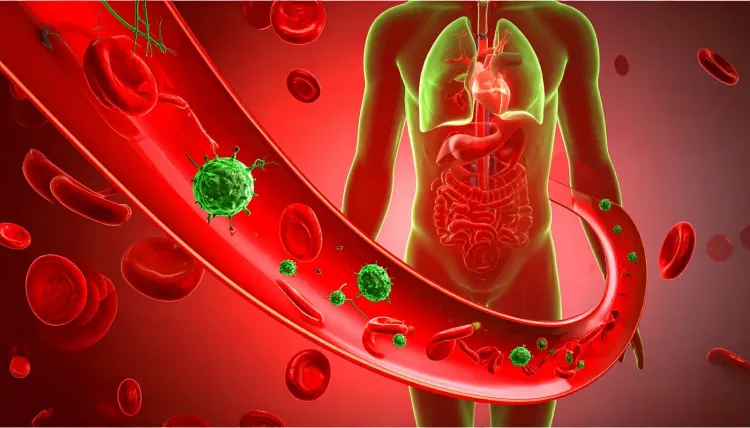Have Indian Scientists Created a Breakthrough Nano-Sensor for Rapid Sepsis Detection?

Synopsis
Key Takeaways
- Rapid Detection: The device can diagnose sepsis in under 10 minutes.
- Cost-Effective: It is designed to be affordable for widespread use.
- High Sensitivity: Capable of detecting endotoxins even in the presence of interfering compounds.
- Versatility: Can detect Gram-negative bacteria like E. coli in water.
- Field-Ready: The prototype is portable and suitable for on-site assessments.
New Delhi, July 24 (NationPress) A team of researchers from the National Institute of Technology (NIT) Calicut has engineered a new highly sensitive, affordable, and point-of-care device featuring an electrochemical biosensor that can swiftly diagnose lethal sepsis infections, thereby enhancing treatment effectiveness.
Sepsis is a critical health issue triggered by an infection that may result in multiple organ failure, shock, or even death. Timely and precise diagnosis is vital for prompt therapeutic measures, significantly influencing patient outcomes and mortality statistics.
The potential for early diagnosis hinges on the accurate and sensitive identification of specific biomarkers. Endotoxin, a harmful element of the outer membrane found in Gram-negative bacteria, serves as a pivotal biomarker indicating an infection that could escalate to sepsis.
To facilitate rapid endotoxin detection, the NIT team devised eight unique sensor designs. Among these, seven utilized electrochemical detection while one employed optical detection, as explained by Dr. N. Sandhyarani, Professor at NIT Calicut.
In a publication in the journal Langmuir, the team showcased a highly sensitive electrochemical sensor chip engineered for the selective identification of Lipopolysaccharide (LPS), compatible with a portable analyzer for on-site evaluations.
All sensors demonstrated exceptional selectivity, successfully detecting endotoxin amidst various interfering substances.
"The presence of endotoxin was identified in pharmaceutical drug Biphasic isophane insulin, fruit juices, and whole blood through the standard addition method, with endotoxin recovery within a 2 percent error margin in all instances," the researchers noted.
Moreover, two of the electrochemical platforms showed versatility by allowing the sensitive detection of Gram-negative bacteria, specifically E. coli, in water samples.
The results indicated that quantifying E. coli using these platforms is on par with conventional biological methods while also expediting analysis time, underscoring their potential for effective water quality monitoring, the team stated.
This team's point-of-care device—an affordable and portable electrochemical biosensor prototype specifically designed for endotoxin detection—successfully identified endotoxin in blood serum via a standard addition approach, yielding results in under 10 minutes.








